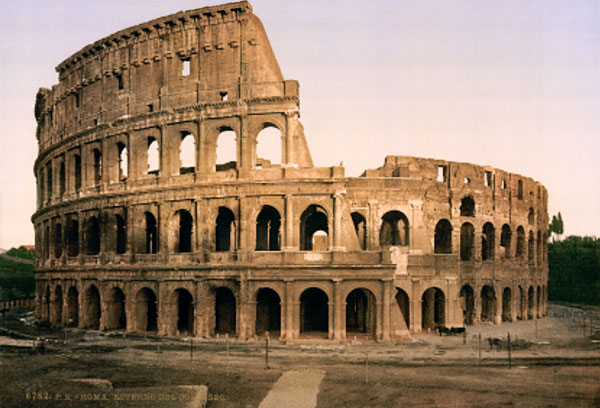The Colosseum subsided 38cm
The Colosseum may need to intervene in a structure similar to that of the Pisa leaning tower, as the southern part subsides deeper than the 38cm north edge.
>>>Snow showers threaten historic Italy
Authorities believe that "strong vibrations" due to high traffic density, especially in Rome's busiest road may be the "culprit" of the southern edge of the subsidence arena. They are aware of the tilt of the 2,000-year-old arena a year ago and have closely monitored this project for several months now.

The southern edge subsides against the northern edge of the 38cm arena.
Many experts from Sapienza University and the Institute of Geological and Environmental Geology have just been asked to conduct an emergency study to determine the cause.
Professor Giorgio Monti, Sapienza University's structural engineering department is concerned that there may be a crack in the foundation of the monument. According to Mr. Montin, the concrete foundation of the Colosseum is a 13m-thick oval ring and "may have a crack in it". This explains why the north and south edges no longer have horizontal links.
"If our doubts are confirmed, we are looking at two historic structures that are separate, and then, they will need to be combined , " Telegraph quoted director Rossella Rea. of Colosseum, an archaeologist with nearly 30 years of experience.
Rea also suggested that restoration work should be done as it did with the Leaning Tower of Pisa more than a decade ago.
The 12th-century tower was closed to visitors for 10 years due to concerns about its stability, and reopened in 2001 after "straightening" and strengthening efforts. foundation of the tower.
"Like the Leaning Tower of Pisa, we need to evaluate the best approaches, but any discussion now is too early," Ms. Rea said.
It was recognized the need for a comprehensive restoration of the Roman arena after many pieces of stone bricks fell from the building over the past few years. The arena was built by Emperor Vespasian in 72 AD.
- Discover interesting surprises about the Colosseum
- Discover the miniature Colosseum arena of the Roman emperor
- Found erotic paintings from Roman times
- Things you didn't know about the Colosseum
- Chinese fishermen catch eels
- Are you assured of WiMAX security?
- Giant goldfish weighs 1.4kg
- Landslides constitute 'bottomless pit' in Ha Tinh province
- Melted glacier water subsides the ocean floor
- Great recipes to help you get out of the marshes
- The appearance of 7 new and old wonders of the world
- Japan moved 4 meters, the earth turned faster
 Norway built the world's tallest wooden tower
Norway built the world's tallest wooden tower Kremlin
Kremlin Ashurbanipal: The oldest royal library in the world
Ashurbanipal: The oldest royal library in the world Decoding the thousand-year construction of Qin Shihuang shocked the world
Decoding the thousand-year construction of Qin Shihuang shocked the world